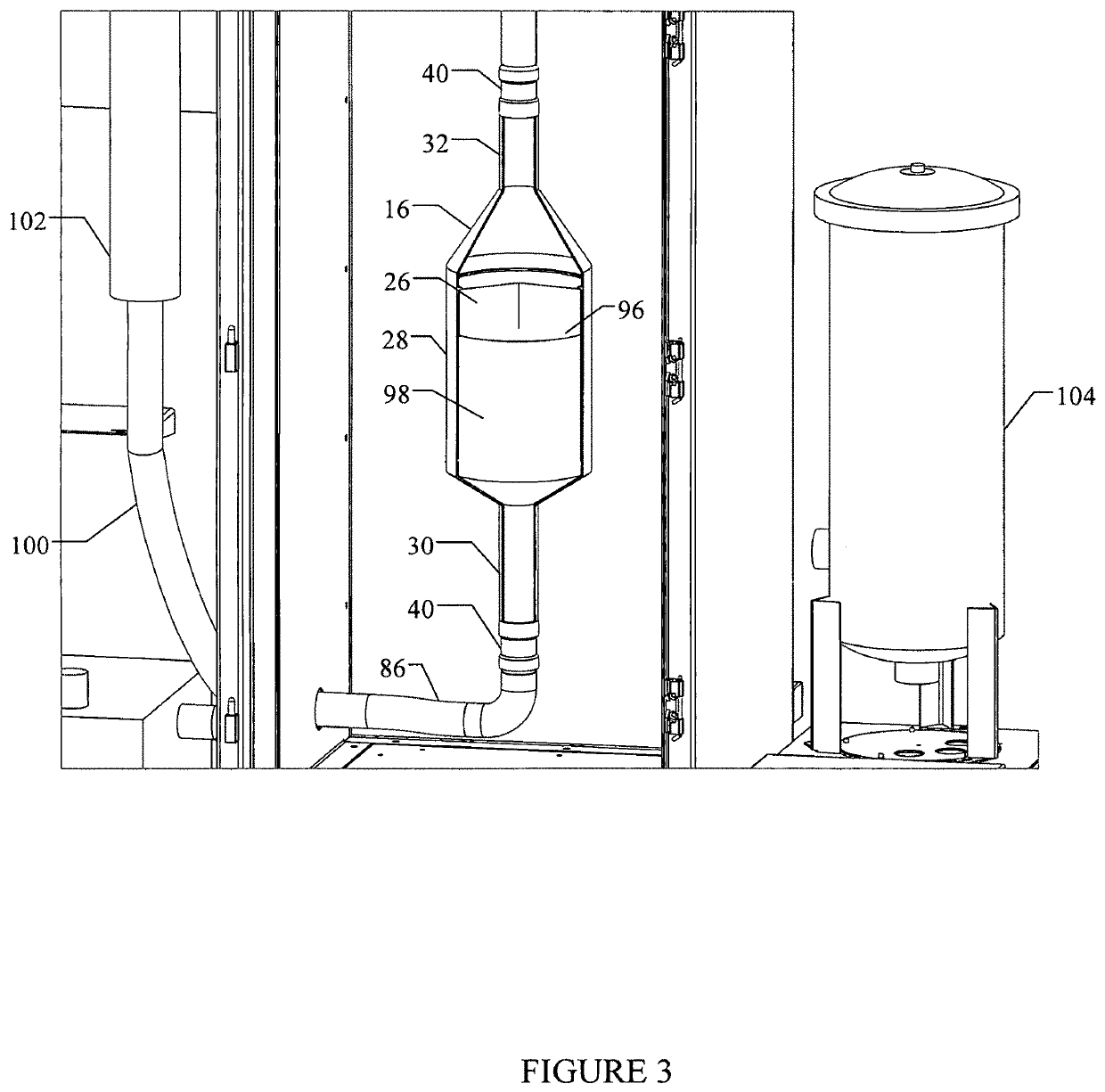Diesel exhaust particulate collectors
a technology for collecting equipment and diesel exhaust, which is applied in the direction of exhaust treatment electric control, separation process, filtration separation, etc., can solve the problems of reducing the efficiency of the engine, accumulating and building up to the point of restricting the flow, and affecting the effect of cleaning the filter
- Summary
- Abstract
- Description
- Claims
- Application Information
AI Technical Summary
Benefits of technology
Problems solved by technology
Method used
Image
Examples
Embodiment Construction
[0029]FIG. 1 shows a filter cleaning system 10 in accordance with a preferred embodiment of the present invention. The illustrated embodiment includes both a dry cleaning section 12 that employs air or other gas to clean the filter and a wet cleaning section 14 that employs water or other liquid, which enhances efficiency and speeds workflow, however it will be understood that the dry cleaning and wet cleaning sections may be installed or used separately or one without the other.
[0030]As can be seen with further reference to FIG. 1, each of the cleaning sections 12, 14 includes a cleaning chamber in which are placed the filters 16 being cleaned, and which are accessed at the front of the assembly via doors optionally having windows through which an operator can observe the filters and associated fittings during the cleaning process.
[0031]As will be described in greater detail below, the dry cleaning section provides cleaning of the filters using air or other gas as a fluid, and coll...
PUM
| Property | Measurement | Unit |
|---|---|---|
| mass | aaaaa | aaaaa |
| pressures | aaaaa | aaaaa |
| pressure | aaaaa | aaaaa |
Abstract
Description
Claims
Application Information
 Login to View More
Login to View More - R&D Engineer
- R&D Manager
- IP Professional
- Industry Leading Data Capabilities
- Powerful AI technology
- Patent DNA Extraction
Browse by: Latest US Patents, China's latest patents, Technical Efficacy Thesaurus, Application Domain, Technology Topic, Popular Technical Reports.
© 2024 PatSnap. All rights reserved.Legal|Privacy policy|Modern Slavery Act Transparency Statement|Sitemap|About US| Contact US: help@patsnap.com










